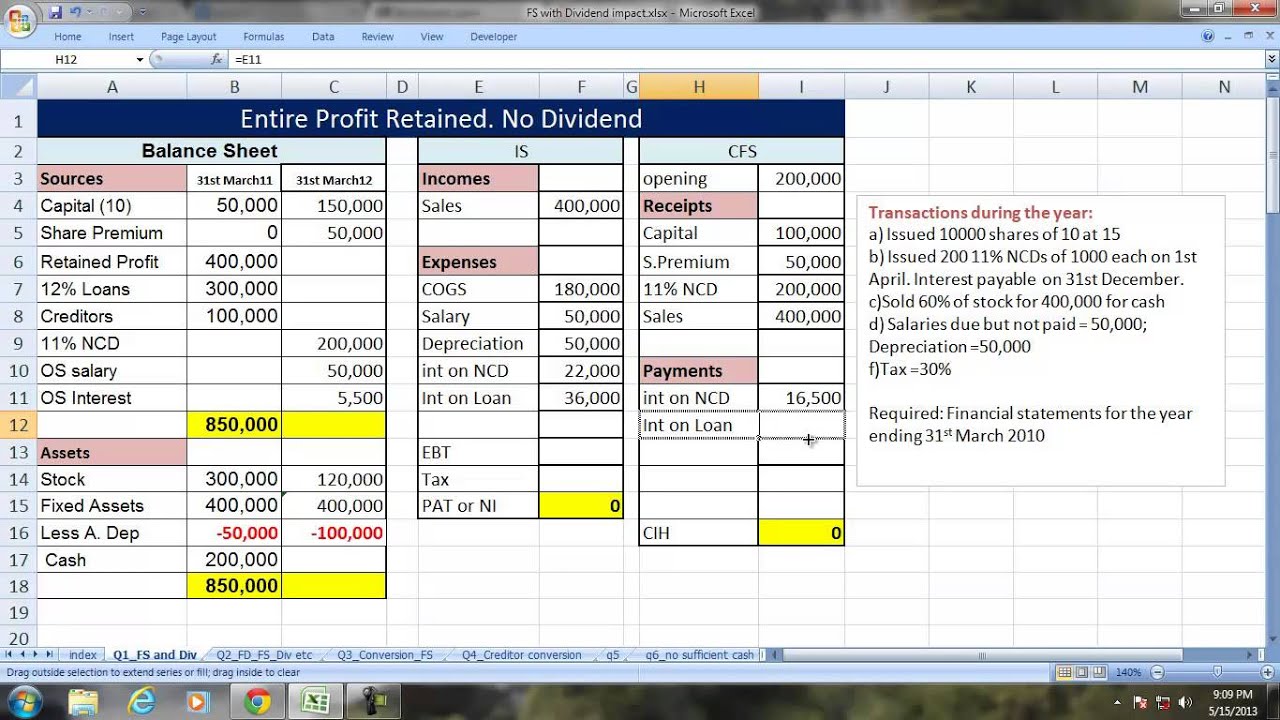

Finance
What Does TTM Mean In Stocks
Published: January 18, 2024
Discover the meaning of TTM in stocks and learn how it impacts your investment decisions. Stay informed about the finance world with our comprehensive guide.
(Many of the links in this article redirect to a specific reviewed product. Your purchase of these products through affiliate links helps to generate commission for LiveWell, at no extra cost. Learn more)
Table of Contents
Introduction
Welcome to the world of stocks, where investors make strategic decisions based on various financial metrics. One such metric is TTM, which stands for Trailing Twelve Months. If you’re new to the stock market or looking to expand your knowledge on financial indicators, understanding what TTM means and how it applies to stocks can be incredibly valuable.
TTM is a financial metric used to analyze a company’s performance over the past twelve months. It provides a comprehensive snapshot of a company’s financial health by including the most recent four quarters of financial data. Analyzing TTM allows investors to assess a company’s growth, profitability, and overall financial stability.
In this article, we will delve deeper into the concept of TTM, its importance in stock analysis, how to calculate it, its limitations, and how it differs from other financial metrics. By the end, you’ll have a solid understanding of TTM and be able to incorporate it into your investment decisions.
Understanding TTM
Trailing Twelve Months (TTM) is a financial metric that provides a comprehensive view of a company’s performance over the past twelve months. It takes into account the most recent four quarters of financial data, allowing investors to assess trends and make informed decisions.
TTM is commonly used in the finance sector because it provides a more accurate representation of a company’s financial health compared to other metrics that only capture a single point in time.
By analyzing TTM, investors can gain insights into a company’s revenue growth, profitability, and overall financial stability. It helps investors identify patterns and trends, detect any shifts in performance, and make predictions about future performance.
For example, if a company has reported consistent revenue growth over TTM, it indicates that the company is on a positive trajectory. On the other hand, significant fluctuations in revenue can indicate instability and require further analysis to understand the underlying factors.
Understanding TTM is crucial to effectively analyze and compare companies within the same industry. By looking at TTM data, investors can make more informed investment decisions, identify potential opportunities, and mitigate risks.
Now that we have a basic understanding of TTM, let’s explore why it is considered an important metric in stock analysis.
Importance of TTM in Stocks
TTM is a critical metric in stocks as it provides a holistic view of a company’s performance over the past twelve months. Here are several key reasons why TTM is important in stock analysis:
- Trend Analysis: TTM allows investors to analyze trends and patterns in a company’s financial performance. By observing revenue, net income, and other key financial metrics over the trailing twelve months, investors can identify if a company is experiencing consistent growth or facing challenges.
- Comparability: TTM enables investors to compare the financial performance of different companies within the same industry. By examining TTM data, investors gain insights into how companies have fared over the same time period, providing a more accurate basis for comparison.
- Long-Term Performance: TTM helps investors assess a company’s long-term performance by considering a larger set of financial data. It smooths out any short-term fluctuations caused by seasonality or one-time events, allowing investors to evaluate a company’s stability and growth potential more accurately.
- Investment Decision-Making: TTM is a valuable tool for making informed investment decisions. By analyzing a company’s TTM metrics, such as earnings per share (EPS) or return on equity (ROE), investors can assess profitability and make predictions about a company’s future earnings potential.
- Identifying Growth Opportunities: By examining TTM metrics related to revenue growth or expansion plans, investors can identify companies that have consistently performed well and have the potential for continued growth in the future.
- Risk Assessment: TTM helps investors assess the financial stability and risk profile of a company. By examining TTM metrics such as debt-to-equity ratio or interest coverage ratio, investors can gauge a company’s ability to manage its financial obligations and withstand economic downturns.
Overall, TTM is a critical metric in stock analysis as it provides a comprehensive view of a company’s financial performance, allowing investors to make more informed investment decisions, compare companies within the same industry, identify growth opportunities, and assess risk.
Calculating TTM
Calculating TTM involves gathering and consolidating financial data for the most recent four quarters. Here are the steps to calculate TTM:
- Gather Financial Statements: Obtain the income statement and balance sheet for the past four quarters. This includes the most recent quarter, the previous quarter, and the same quarter from the previous year.
- Retrieve Annual Reports: Obtain the annual reports for the most recent fiscal year, which typically includes the income statement and balance sheet for the full year.
- Calculate Quarterly Totals: Add up the corresponding line items in the income statement for each of the four quarters. For example, add the total revenue, net income, and other important metrics for each quarter.
- Calculate Annual Totals: Add up the corresponding line items in the annual income statement for the most recent fiscal year. This will provide the annual totals for each line item.
- Combine Quarterly and Annual Totals: Combine the quarterly totals with the annual totals to obtain the Trailing Twelve Months figures. For example, add the total revenue from the four quarters to the annual revenue total to get the TTM revenue figure.
- Verify Accuracy: Validate the calculations and double-check for any errors or inconsistencies to ensure the accuracy of the TTM figures.
Once the TTM figures are calculated, they can be used for further analysis and comparison. Common TTM metrics include TTM revenue, TTM net income, TTM earnings per share (EPS), and TTM return on equity (ROE).
It’s important to note that TTM is a dynamic metric that is updated as new financial data becomes available. As each quarter passes, the oldest quarter is dropped, and the most recent quarter is added to the calculation, ensuring that the TTM figures always represent the past twelve months.
Calculating TTM provides investors with a comprehensive and up-to-date view of a company’s performance, enabling more accurate analysis and decision-making.
Limitations of TTM
While TTM is a useful metric for analyzing a company’s performance, it is important to be aware of its limitations. Here are some key limitations of TTM:
- Lack of Future Projection: TTM focuses on historical data and does not provide insight into future performance. It is essential to combine TTM analysis with other forecasting techniques to make accurate projections about a company’s future financial health.
- Seasonality and Cyclical Trends: TTM may not fully capture the impact of seasonality or cyclical trends. If a company’s performance is highly influenced by seasonal factors, the TTM figures may not accurately represent its true financial position.
- One-Time Events: TTM calculations may be impacted by one-time events, such as a large acquisition or a significant legal settlement, which can distort the financial data. It is important to consider such events separately and adjust the TTM analysis accordingly.
- Lag in Reporting: TTM relies on reported financial statements, which may have a lag in reporting. As a result, the TTM figures may not reflect the most up-to-date information available, particularly for companies with delayed financial reporting.
- Varying Reporting Periods: Companies may have different fiscal year ends or reporting periods, making it challenging to compare TTM data across companies. It is important to normalize the data to ensure accurate comparisons.
- Changes in Business Strategy: TTM calculations assume that a company’s business strategy remains consistent over the trailing twelve months. However, if a company undergoes significant strategic shifts, TTM figures may not reflect the impact of these changes on its financial performance.
- Dependence on Historical Performance: TTM heavily relies on past financial performance, which may not always be indicative of future success. Changes in market conditions, competition, or industry trends can impact a company’s performance, rendering TTM figures less relevant.
While considering the limitations of TTM, it is important to complement its analysis with additional financial metrics and qualitative factors to get a more comprehensive understanding of a company’s overall performance and prospects.
TTM vs. Other Financial Metrics
When analyzing stocks, it is important to understand how TTM compares to other key financial metrics. While TTM provides a comprehensive view of a company’s performance over the past twelve months, it is not the only metric investors should consider. Here are some comparisons between TTM and other financial metrics:
TTM vs. Annual Metrics: TTM differs from annual metrics as it includes the most recent four quarters of data, while annual metrics focus on the financial performance of a company over a full fiscal year. While annual metrics provide a longer-term perspective, TTM offers more up-to-date information and captures any recent changes in a company’s performance.
TTM vs. Forward Metrics: TTM reflects historical data, while forward-looking metrics, such as projected earnings or revenue forecasts, attempt to estimate a company’s future performance. While TTM provides a solid foundation for analysis, combining it with forward metrics allows investors to evaluate a company’s growth potential and make predictions about its future financial health.
TTM vs. Comparative Ratios: Comparative ratios, such as price-to-earnings (P/E) ratio or price-to-sales (P/S) ratio, compare a company’s financial metrics to those of its peers or industry averages. TTM figures can be used to calculate these ratios, making them more accurate and relevant. Comparative ratios provide insight into a company’s valuation relative to its competitors or the overall market.
TTM vs. Key Performance Indicators (KPIs): Key Performance Indicators focus on specific metrics that drive a company’s performance, such as customer acquisition cost, customer churn rate, or inventory turnover. While TTM provides a holistic view of a company’s financial health, KPIs offer deeper insights into specific areas of a company’s operations and can help gauge its efficiency and effectiveness.
TTM vs. Moving Averages: Moving averages are calculated based on the average of a stock’s price over a specific time period. TTM can be used alongside moving averages to evaluate a stock’s price trends and identify potential buying or selling opportunities. While TTM provides a comprehensive financial picture, moving averages offer insights into a stock’s price movements.
By considering these comparisons, investors can use TTM in conjunction with other financial metrics to obtain a well-rounded understanding of a company’s performance, financial position, and growth potential when making investment decisions.
Conclusion
Trailing Twelve Months (TTM) is a vital metric in stock analysis that provides valuable insights into a company’s financial performance over the past twelve months. By analyzing TTM figures, investors can assess trends, compare companies within the same industry, and make informed investment decisions.
TTM offers a comprehensive view of a company’s growth, profitability, and financial stability. It allows investors to identify patterns, detect shifts in performance, and predict future success. However, it’s important to keep in mind the limitations of TTM, such as its focus on historical data and potential exclusions of one-time events or market fluctuations.
When analyzing stocks, TTM should be considered alongside other financial metrics, such as forward-looking projections, comparative ratios, key performance indicators (KPIs), and moving averages. By combining these metrics, investors can gain a more comprehensive understanding of a company’s financial health, identify opportunities, and manage risks effectively.
In conclusion, TTM is a powerful tool that helps investors evaluate a company’s performance over a specific period. By understanding TTM and utilizing it in conjunction with other metrics, investors can make more informed decisions, accurately assess a company’s financial health, and increase their chances of success in the stock market.














